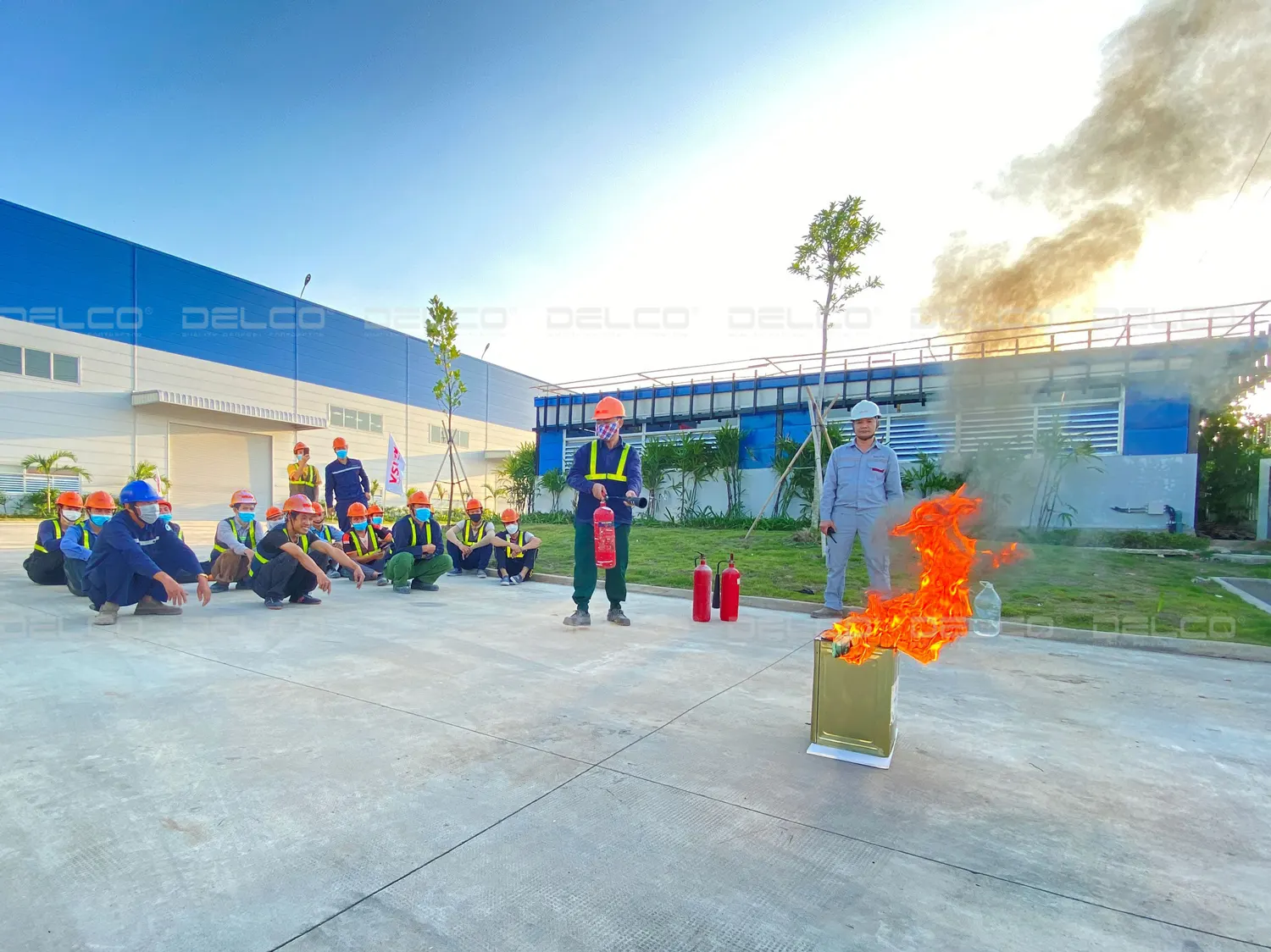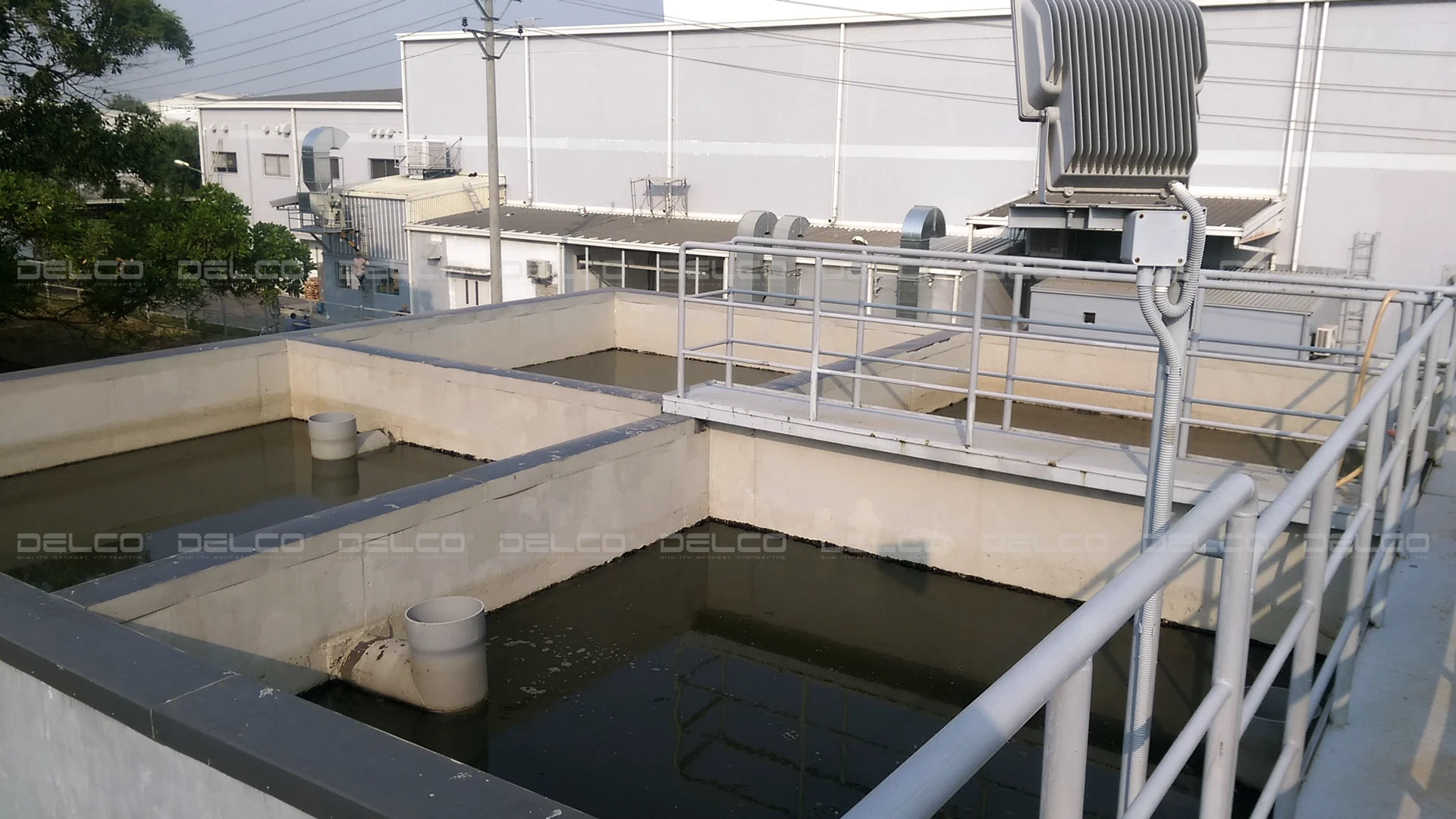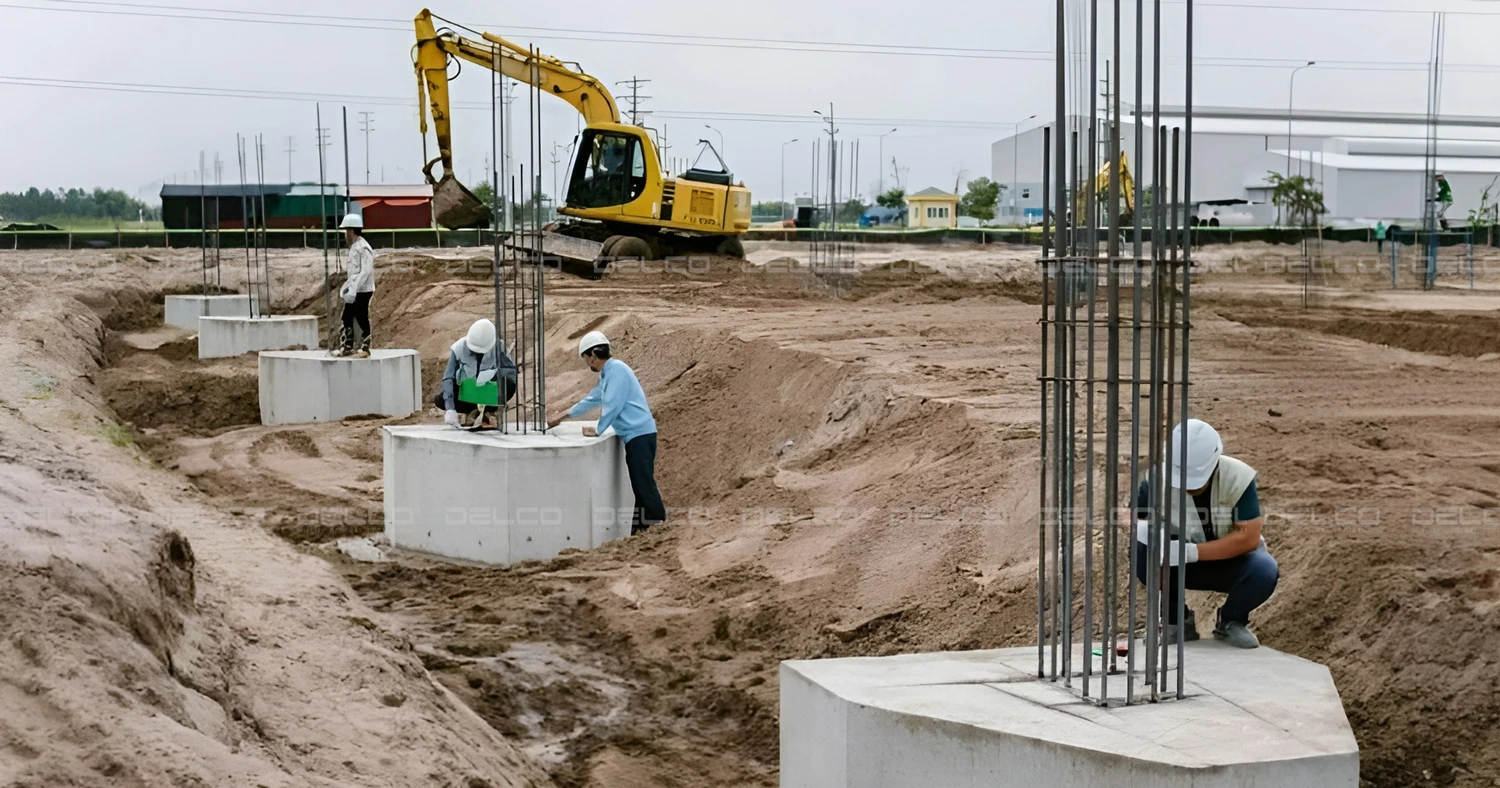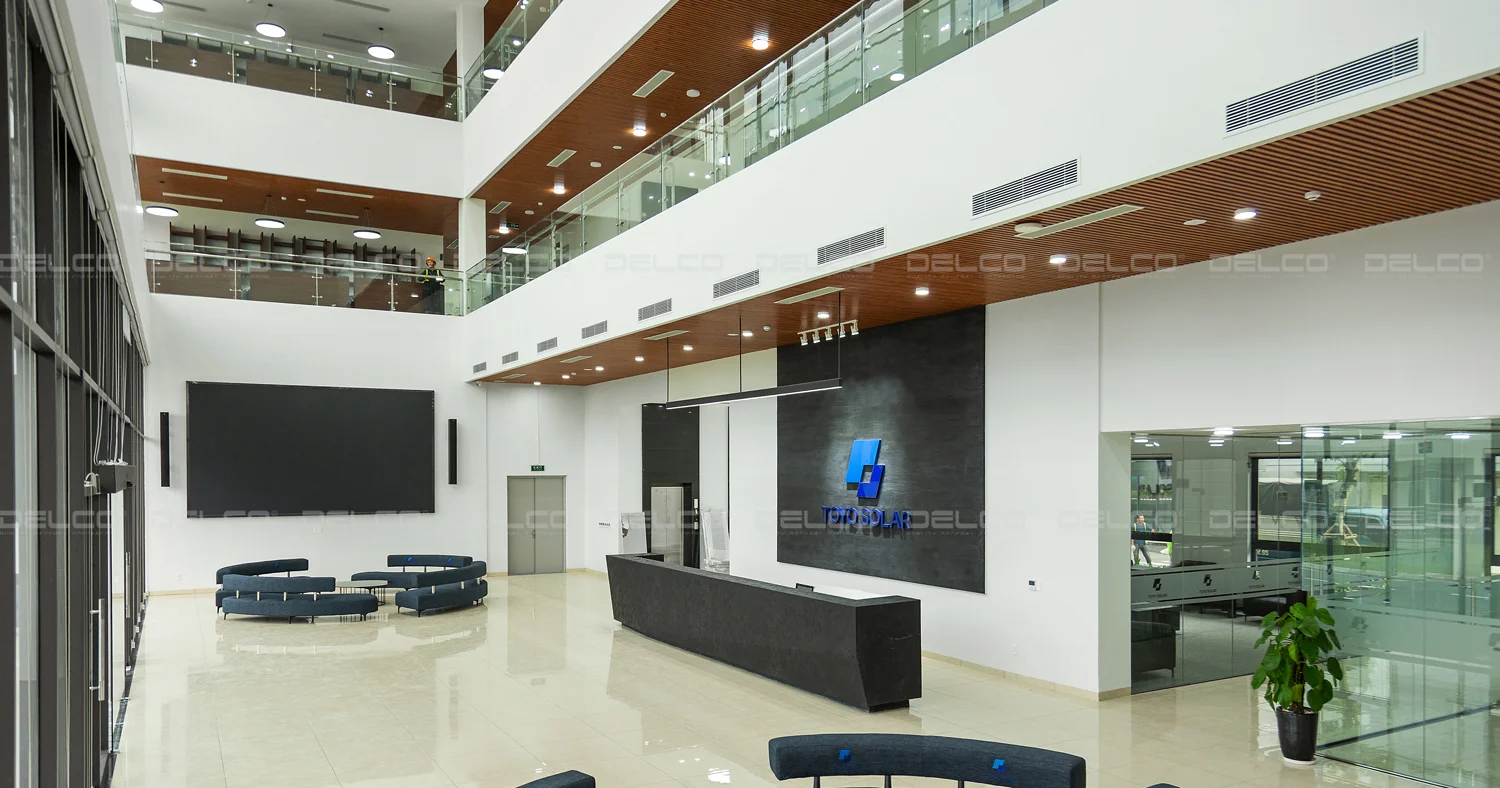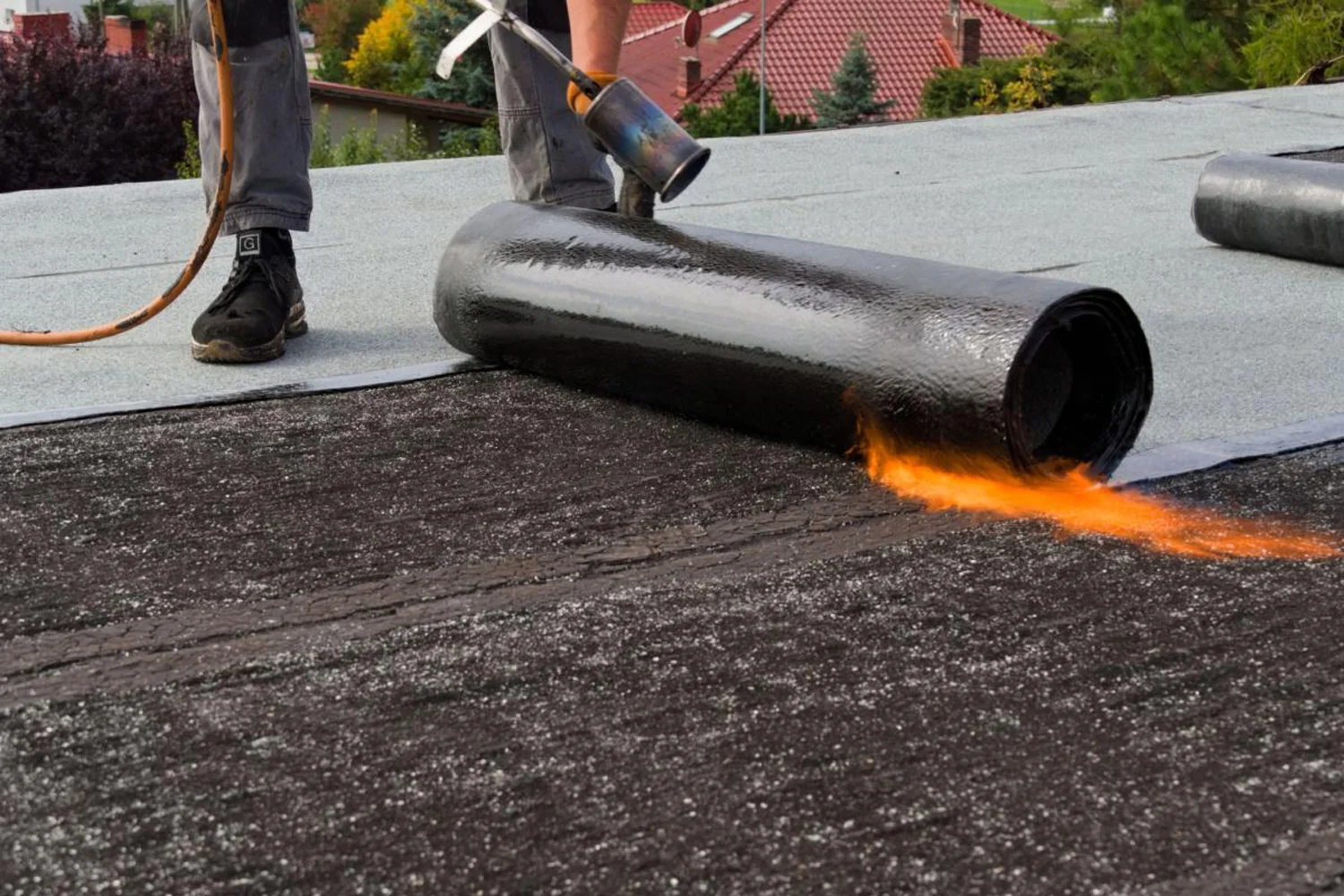When building a printing factory, investors should pay attention to geographical location factors, preferential policies of the provinces and some issues such as machine foundations; moisture-proof and waterproof systems; waste treatment systems; etc. to ensure safe and effective production processes.
Convenient location near the economic center
When building a printing factory, geographical location and preferential policies of the provinces are prominent factors. A factory located in a developed economic area with favorable trade will help businesses save costs on transporting raw materials and supplies during construction, as well as facilitate the distribution of goods. Recruiting workers is also more favorable than in developing areas.
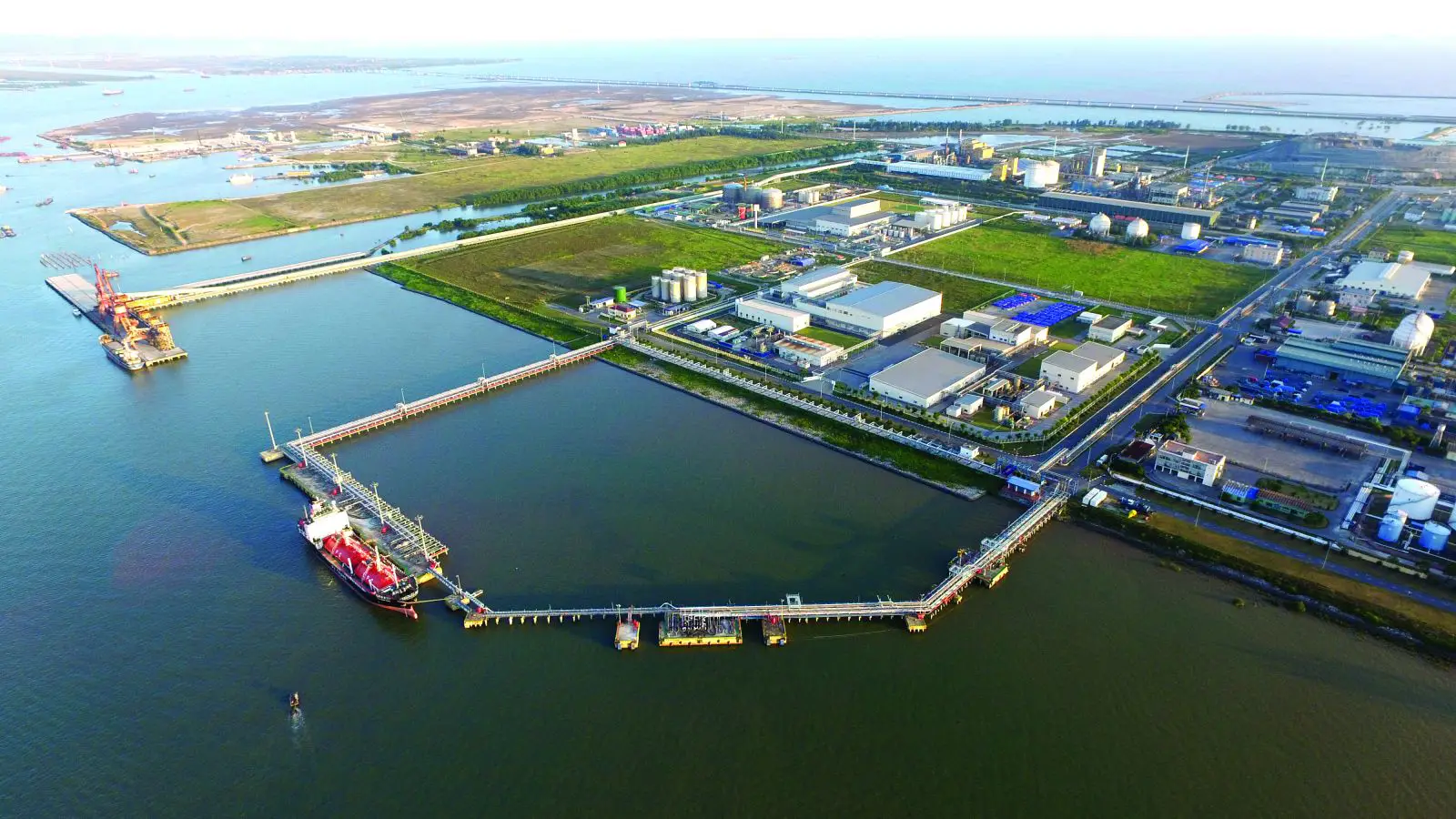
Stable machine foundation, minimizing vibrations
In the industrial printing process, the production line includes many devices and machines that require high precision such as printers, stamping machines, CNC cutting machines, etc. Each operation of the printing system will print thousands of copies. Just a small vibration spreading on the ground, when transmitted to the machine foundation system, can affect the accuracy of the printer line, causing errors and having to discard a lot of publications, resulting in great damage to the factory. Therefore, when building a printing factory, meticulous planning is required to ensure that vibrations are minimized.
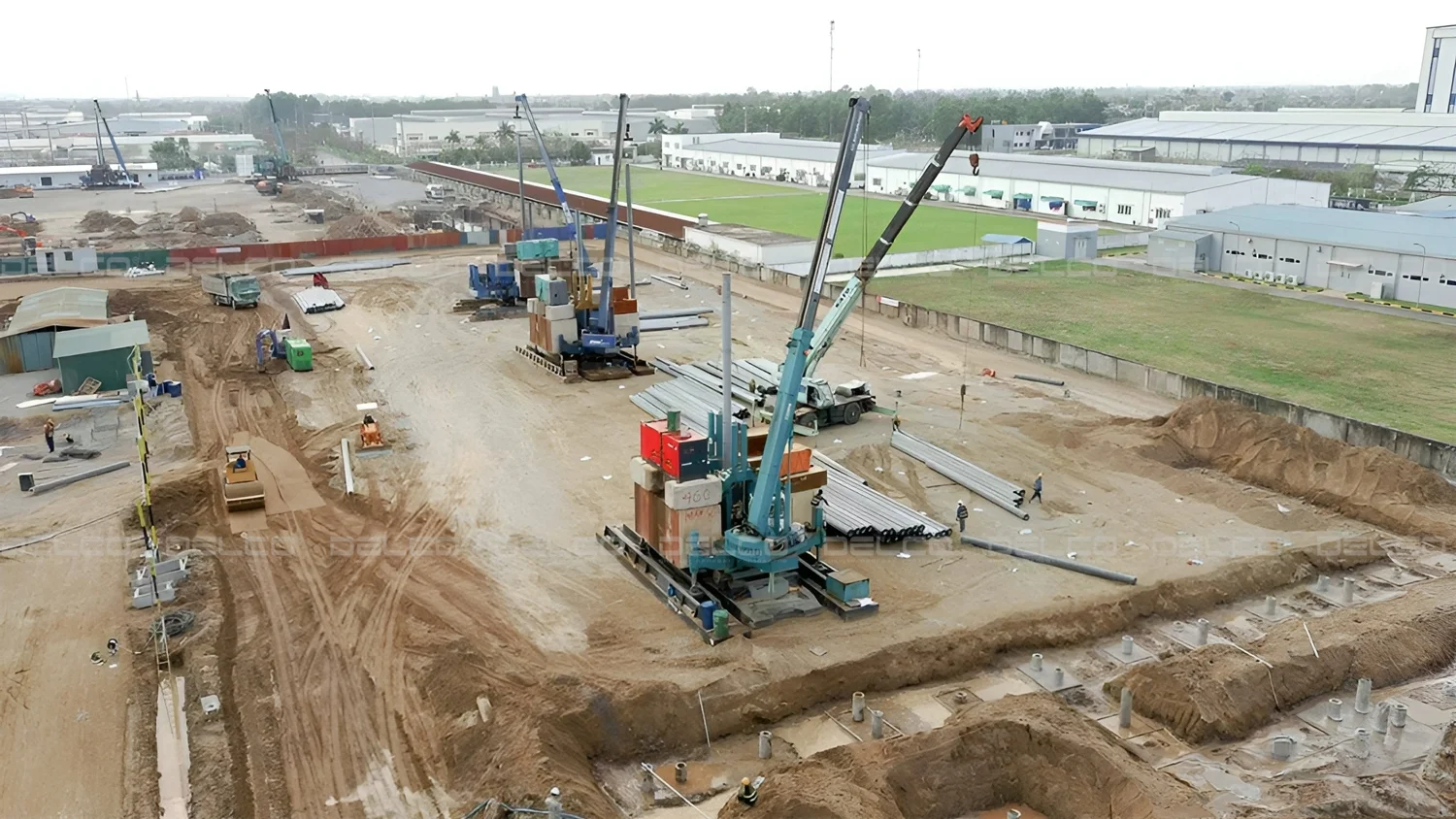
Construction of pile pressing and machine foundation at the packaging printing factory – DORCO Living Vina Ha Nam Factory, by DELCO as the general contractor.
To ensure stability of the machine foundation, preventing subsidence, or any movement when the entire production line operates, DELCO applies the concrete pile pressing method to construct the project’s foundation. The pile foundation will be separated from the ground structure with specific gaps and elastic material will be used around the gaps to ensure that there is no impact from the ground to the machine foundation.
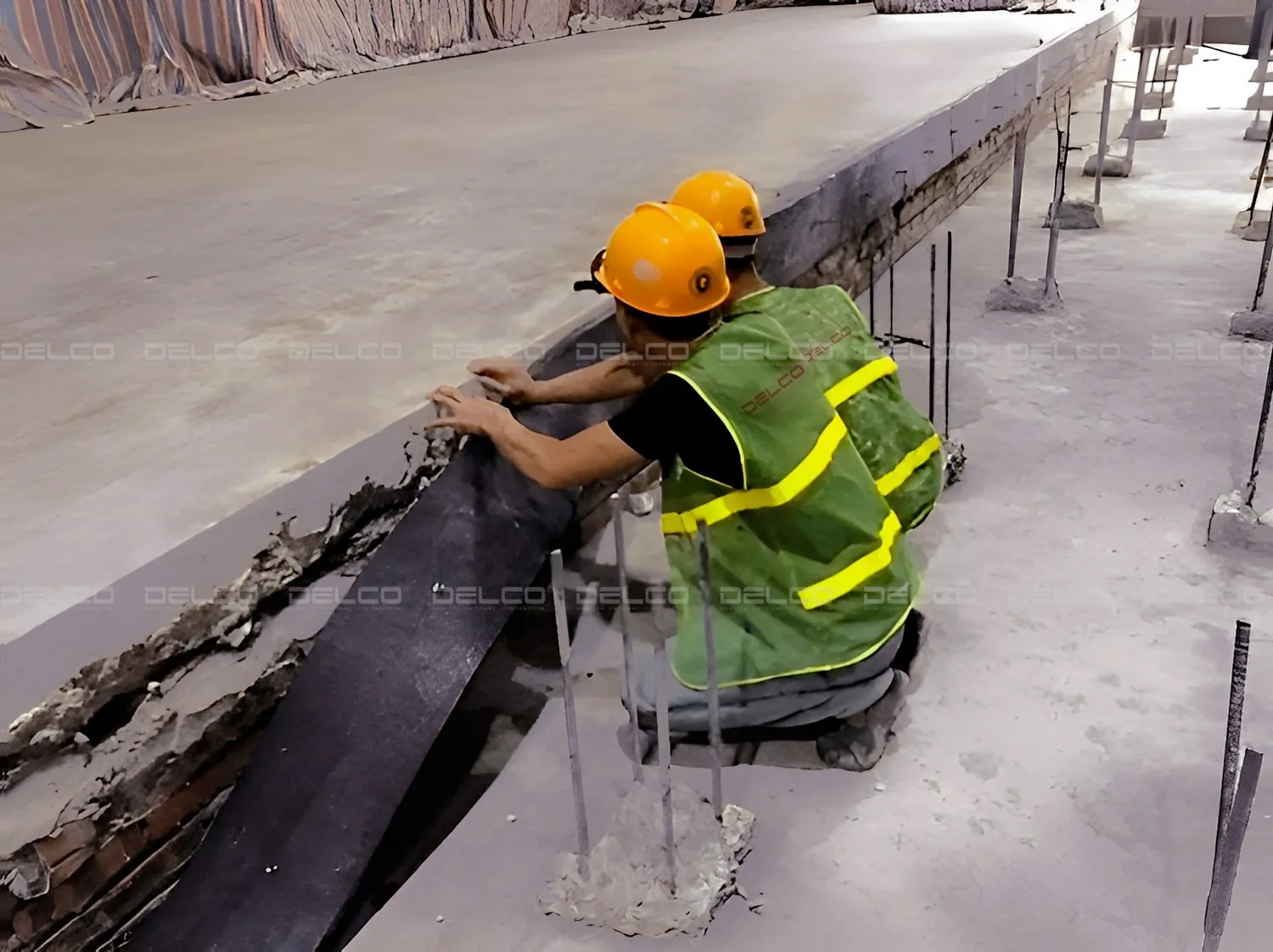
Installation of anti-vibration rubber sheets and machine foundation steel reinforcement in the project to renovate the foundation for the packaging printing production line at Dorco Vina razor factory in Hung Yen, undertaken by DELCO as the general contractor.
In addition, when building a multi-storey printing factory with the printer located on the 2nd floor or 3rd floor, the structural layout plan will vary depending on the requirements for vibration resistance and load capacity of each equipment. In this case, applying the traditional floor beam solution, increasing the height of the beam and floor, and using checkerboard beam system will help minimize vibration when the machine operates. However, for printing or punching machines that require super quiet, investors should consider placing the machine on the first floor of the factory.
Humidity control, waterproofing for the factory
Using high qualify waterproof construction materials
In a printing factory, materials such as printing paper and ink are susceptible to mold if they are damp, which seriously affects production quality. Therefore, humidity must be strictly controlled, especially in factories located in the Northern region where the weather is very humid. To overcome this situation, businesses need to use high-quality materials with excellent waterproofing properties such as waterproof mortar, waterproof corrugated iron, elastic paint, etc.
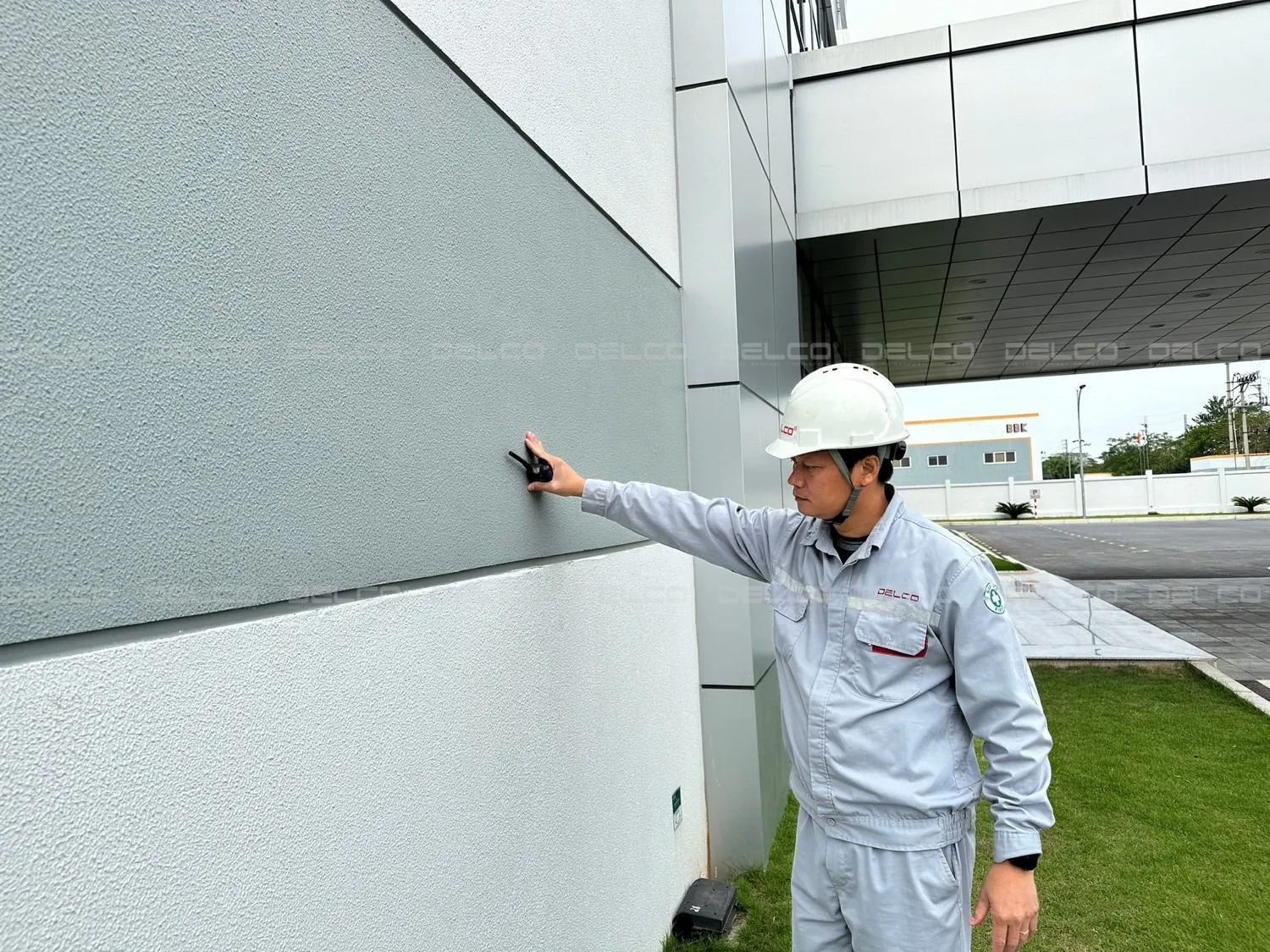
In the construction of the DORCO Living Vina printing factory, DELCO used elastic paint with good permeability and moisture dissipation properties, protecting the project from weather impacts.
Using dehumidification and ventilation systems
In industrial production, using industrial dehumidifiers is the most effective and economical method. Industrial dehumidifiers have large capacities from 45L/day to 500L/day, with high dehumidification performance, for large space, suitable for production and storage requirements of the printing factory.
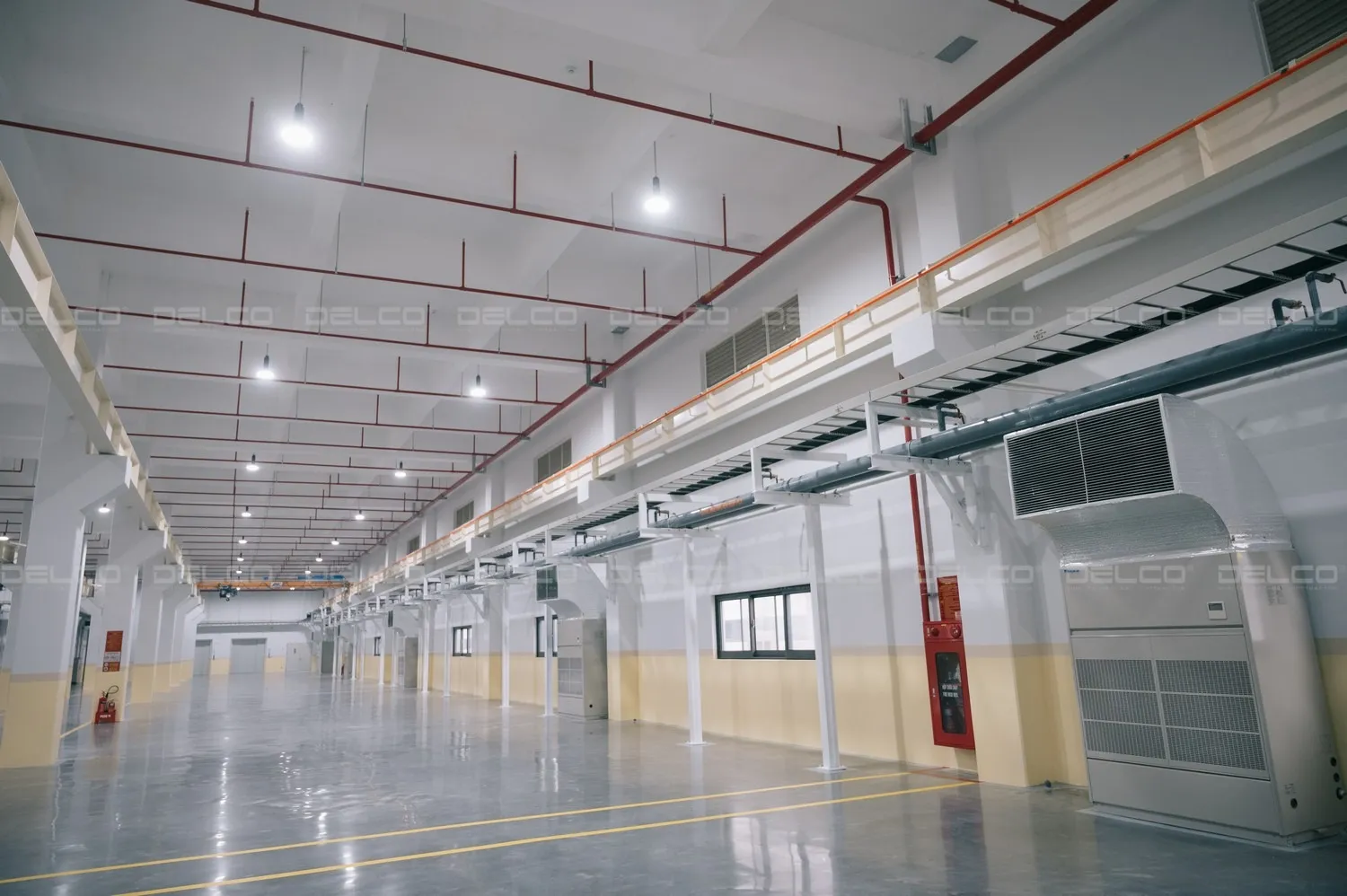
The large-capacity floor-mounted air conditioning system at the commercial printing factory in Ha Nam constructed by DELCO as the general contractor.
In addition, businesses also need to design a suitable air conditioning and ventilation system based on the area and requirements of the factory, ensuring that the humidity inside the factory is always stably controlled.
The fire protection system is suitable for the scale and specifics of production
Printing factories often contain flammable materials such as printing paper, chemicals… Therefore, businesses need to have a fire protection system appropriate for their scale and production characteristics, ensuring the adequacy of transportation, water supply systems, as well as fire detection, suppression, and prevention systems in accordance with regulations of the Ministry of Public Security.
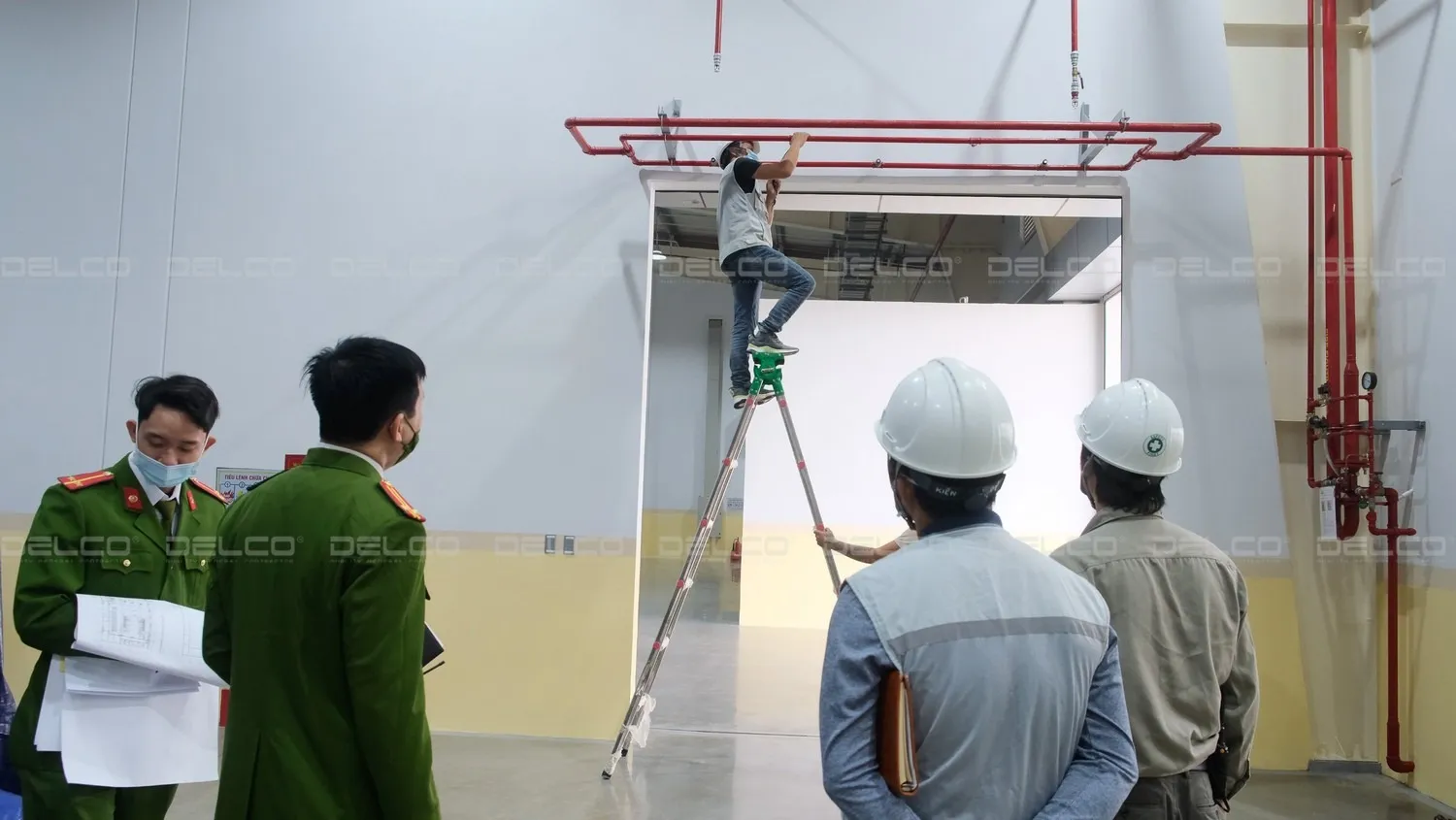
The drencher fire protection system uses fire resistant curtains to limit and prevent the spread of fires – one of DELCO’s consulting adjustments compared to the original design of the DORCO printing factory.
Waste treatment system meets standards
For printing factories generating wastewater and emissions during the production process, businesses need to invest in environmental treatment systems as prescribed in QCVN 40-2011/BTNMT.
Some solutions reducing the amount of pollutants at printing factories include: collecting waste ink and waste oil before discharging into the environment; classifying different types of wastewater; using special ink or printing each color separately to limit washing after each print; using solvent-free cleaning agents such as soap or reusable cleaners.
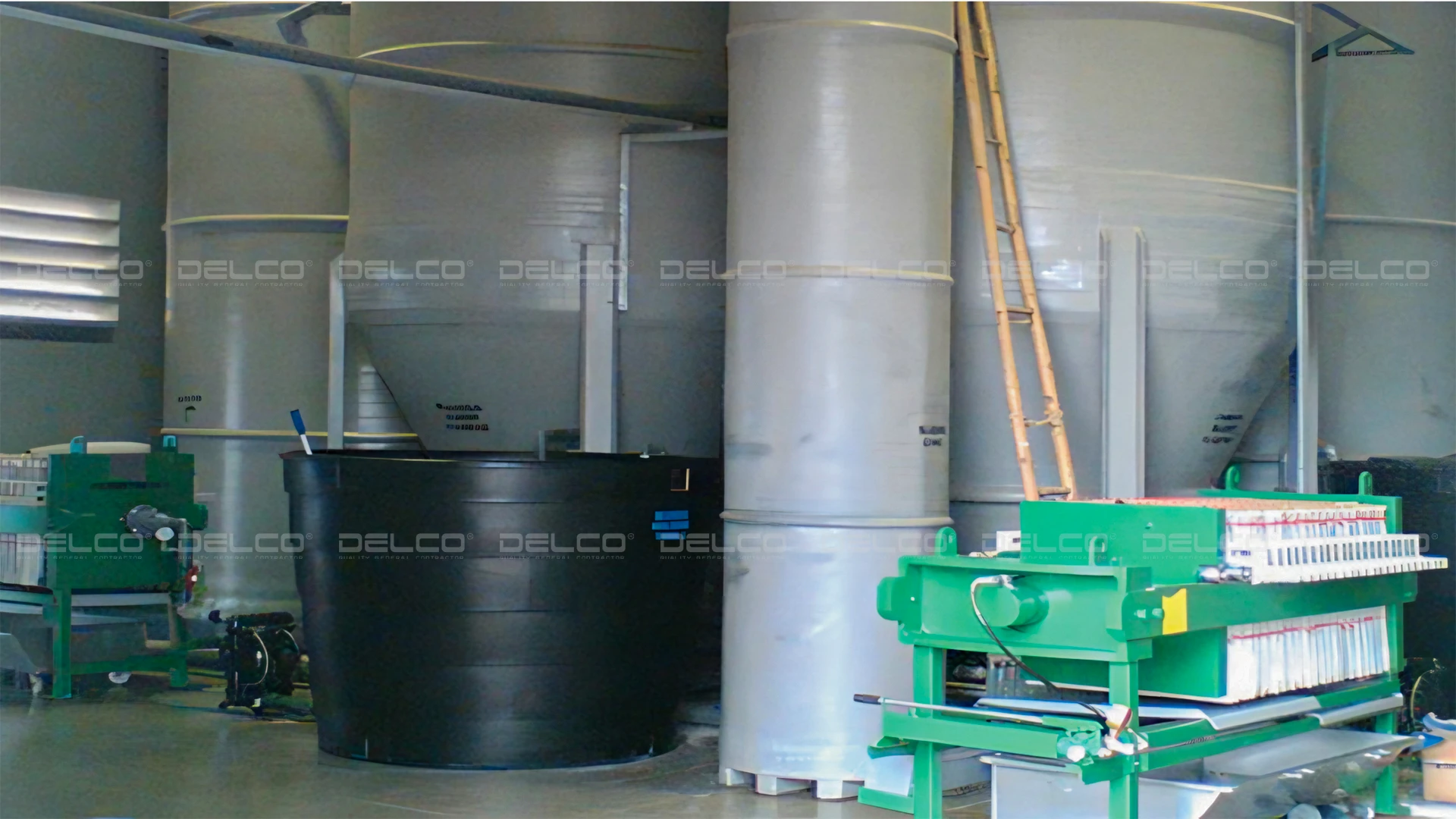
The wastewater treatment system is constructed by DELCO at Spindex technology factory in Hanoi, specializing in precision machining and assembly for the printer, washing machine, car industry…


